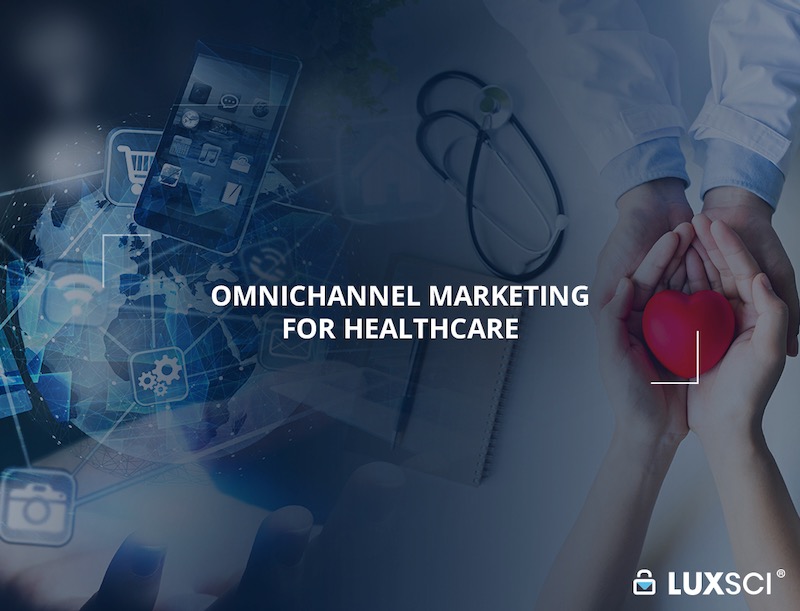Omnichannel healthcare marketing is a relatively new strategy that can help healthcare marketers achieve success.
Marketers need to leverage a variety of marketing tactics to reach and communicate with their patients. Omnichannel marketing involves the integration of digital channels and traditional media to provide a consistent and personalized experience across all channels to drive marketing success.
What Is Omnichannel Healthcare Marketing?
Most companies deploy a variety of different marketing tactics in order to reach a wide customer base. However, these various marketing campaigns are often launched without much overall planning and coordination with other tactics.
This is where omnichannel marketing steps in. Instead of launching a billboard campaign and a random Facebook campaign, omnichannel marketing is a holistic approach that coordinates the different marketing streams. For example, let’s say the billboard is located at a major intersection and the Facebook campaign targets people who live or work in that zip code. Both the billboard and the Facebook ad messages have the same call to action (“now accepting new patients,” etc.) and use the same logos, colors, and imagery to increase brand awareness.
Omnichannel marketing strategies are designed to reach customers both online and offline as they move through the sales funnel. It aims to give customers a personalized experience across every marketing channel. Each stream works together to align both the goals of the business and their customers.
The power of omnichannel marketing is the ability to tailor and distribute messages based on where the customer is in the sales and marketing funnel. In the above example, everyone sees the same billboard. But in the Facebook campaign, you can further personalize messaging based on demographic characteristics. Maybe you send young women of childbearing age a targeted ad about your available ob/gyn services. The possibilities are endless.
The organization can send the right messages to prospects researching solutions or serve promotions to bottom-of-the-funnel prospects. In omnichannel marketing, a company’s messaging to an individual consumer also takes the previous interactions between the business and the customer into account.
This approach allows the organization to deliver the right messages to the customer at the right time.
Healthcare Marketing and HIPAA Compliance
Many healthcare marketers may consider adopting an omnichannel strategy. However, they need to take HIPAA and privacy regulations into account before proceeding.
The strict HIPAA laws mean that your organization needs to consider how it will protect ePHI at every step of the process. In short, ePHI involves any information that is both individually identifiable and relates to a person’s medical condition, treatments, or payment information. Even a simple email newsletter about a patient’s disease could violate regulations if it isn’t sent in a secure manner.
It’s easy to violate HIPAA. Healthcare organizations always need to consider their impact when developing and implementing their omnichannel marketing strategy. This means that any email message which could contain ePHI needs to be encrypted, texts with ePHI need to be sent securely, and databases of patient information also need to be encrypted.
While HIPAA regulations certainly present challenges to an omnichannel marketing strategy, the benefits of such a holistic approach outweigh the extra work.
How to Use Omnichannel Marketing In Healthcare
It can be hard to get your head around the benefits of omnichannel marketing, so let’s walk through another example. Let’s say a person develops a new health problem and they Google it. This leads them to your organization’s blog post about that particular condition. In an omnichannel context, this is the first channel that the patient interacts with, and the beginning of your sales funnel. Next, the web page directs the patient to book an appointment through a form on your website. Every interaction is logged and stored along with any information they provided in a secure database.
After the form submission, an office admin calls to confirm the appointment, and welcomes the patient to the organization. The office admin logs this action in the database and it triggers an automated email. The email includes a reminder of the time, any necessary preparations, and things to bring to the appointment. This message is also an opportunity for your organization to provide personalized marketing. This could include invitations to upcoming health workshops or notifications of screening tests specific to their demographics or health conditions.
After the patient visits the clinic and receives their treatment, the event triggers an automated text message that asks them to review their experience.
In this example, the patient interacted with the organization across multiple channels. Each one of these presents an opportunity for the healthcare provider and the patient to align their goals. If these interactions are intentionally designed, they can improve the customer’s experience with personalized communications.
With the right messaging, a healthcare company can turn one-off visits into lifelong customers. This is good not only for the business’s bottom line, but it also keeps the patient engaged with their care.
Pursue A Safe Omnichannel Marketing Strategy With LuxSci
As you can see, omnichannel marketing provides many opportunities to improve the relationships between the patient and the organization. It can also help businesses succeed in the long term. However, personalized messaging does present a range of HIPAA issues, so companies need to pursue omnichannel marketing strategies with care.
At LuxSci, all of our services are designed with HIPAA in mind. This means that they are secure and comply with the regulations. Our encrypted email, text, and other solutions allow you to interact with your patients in a secure manner, without violating the law. Contact us now to find out how your organization can benefit from a secure and HIPAA-compliant omnichannel marketing strategy.

